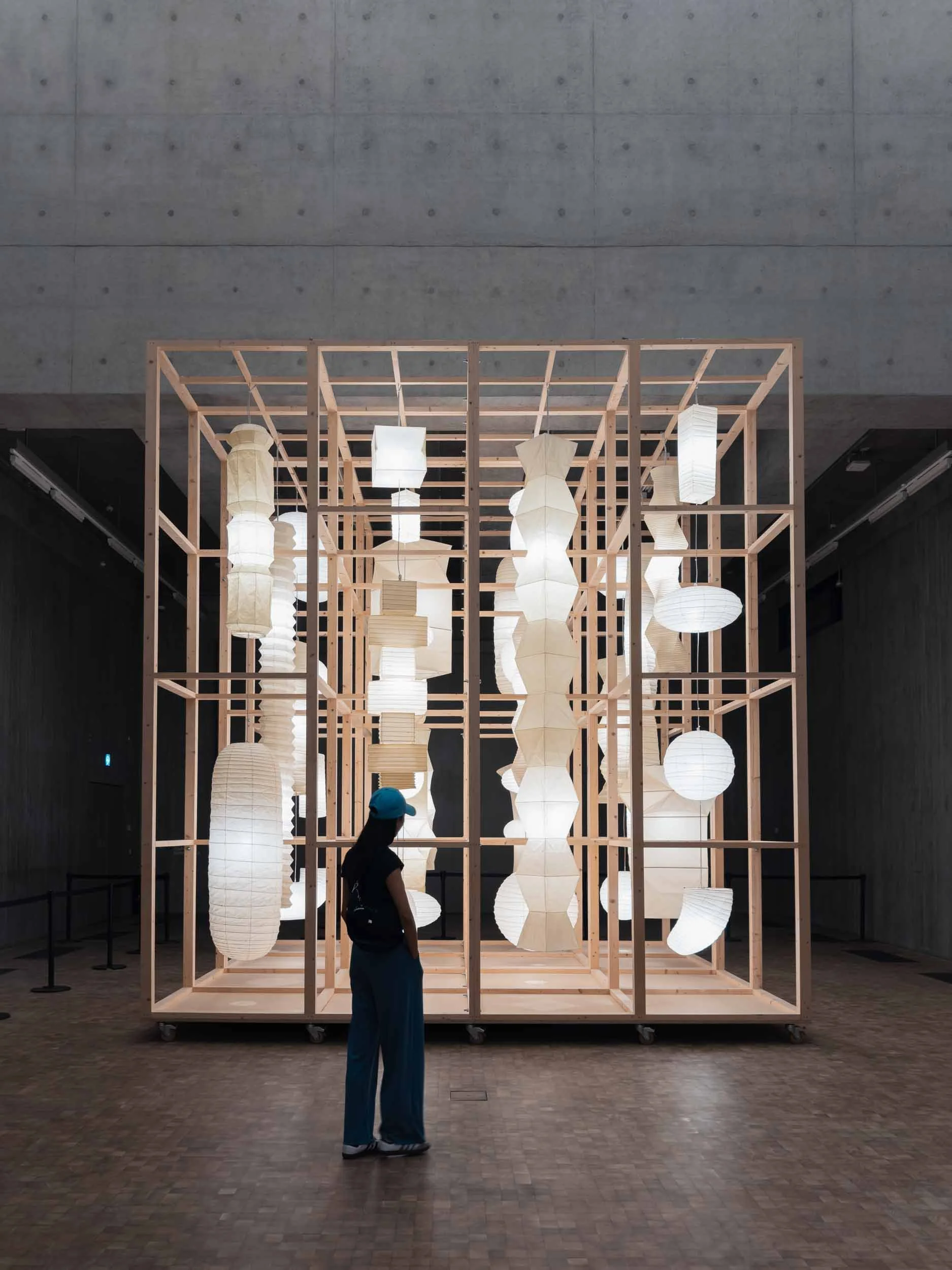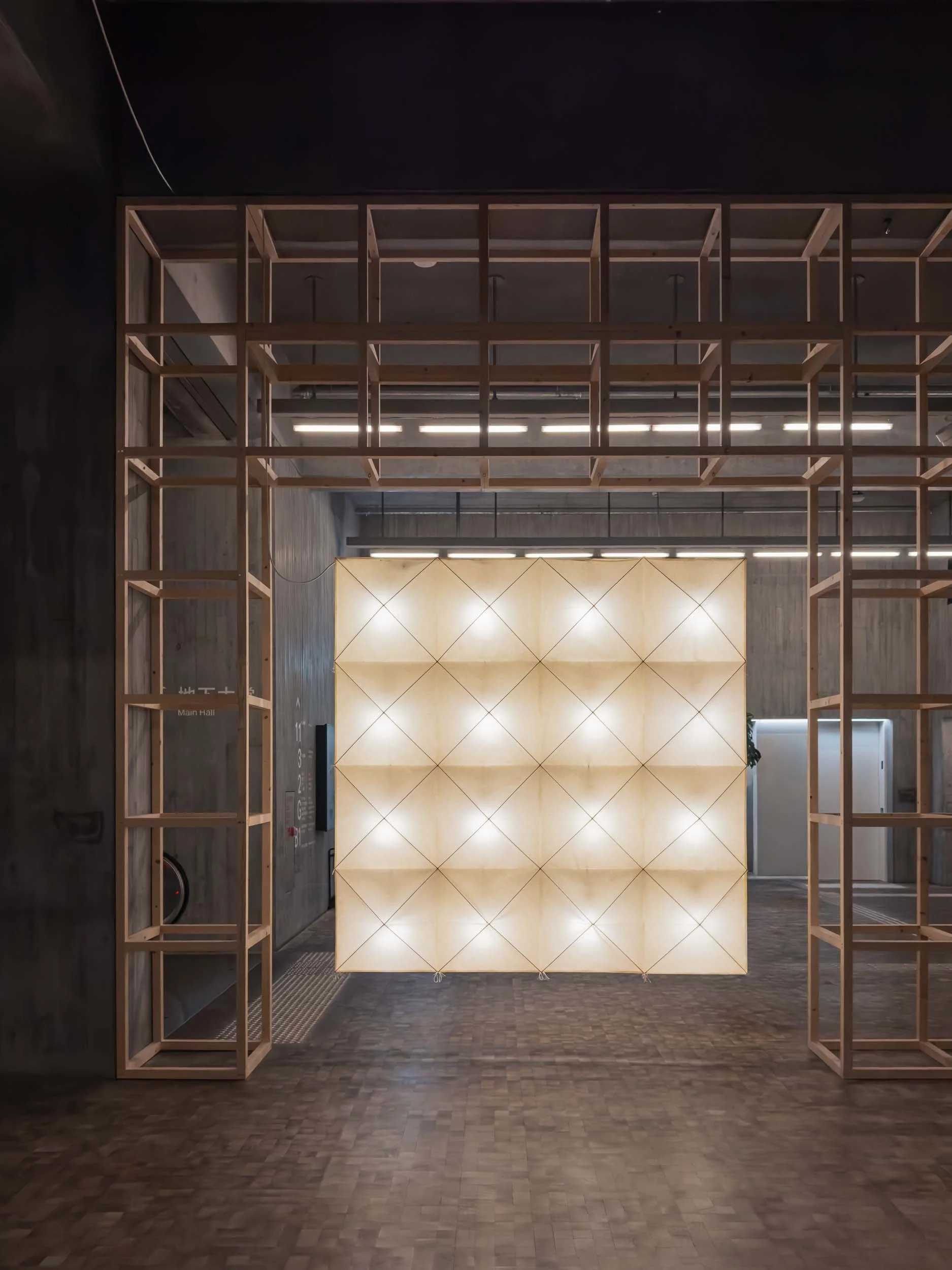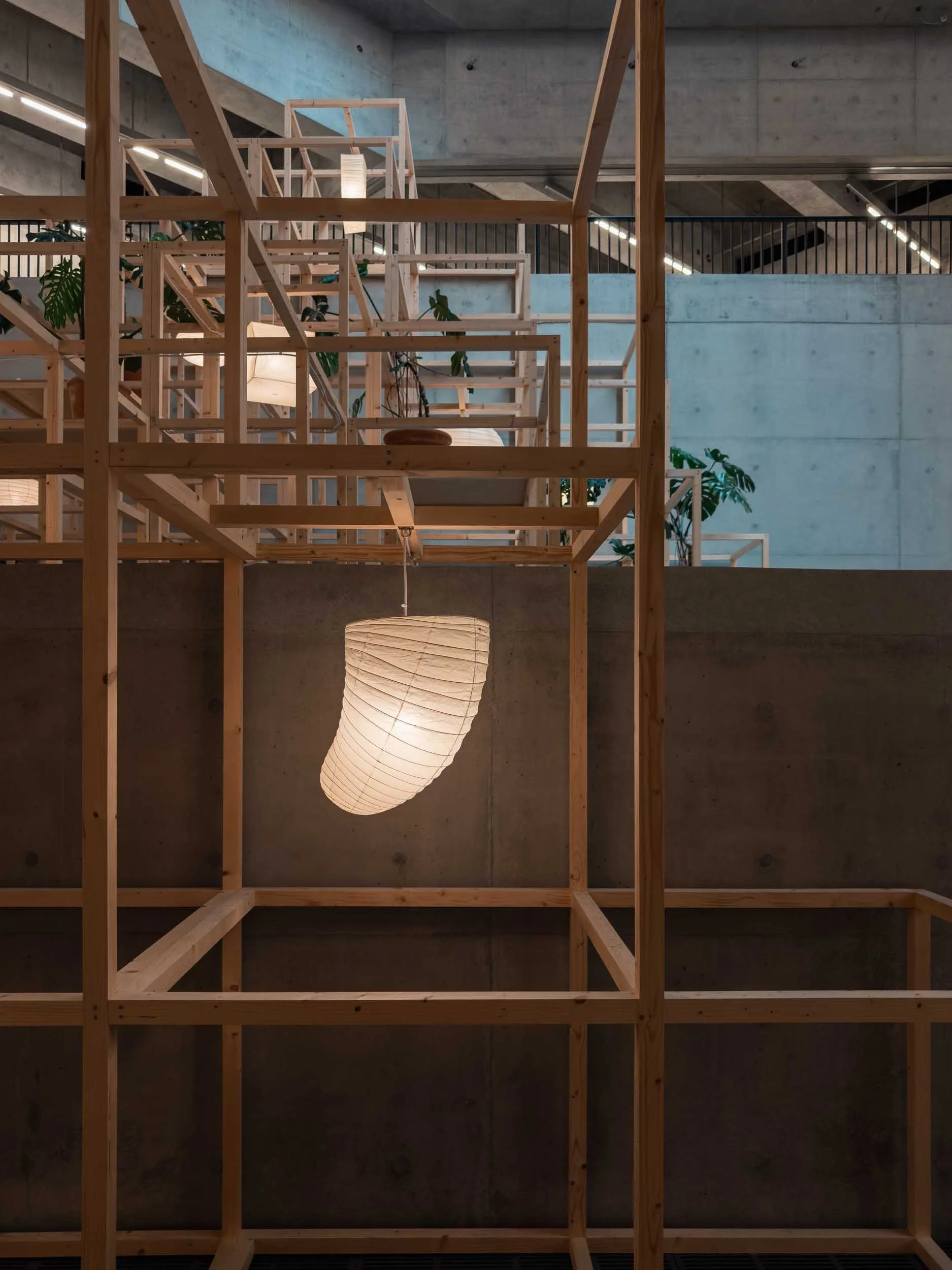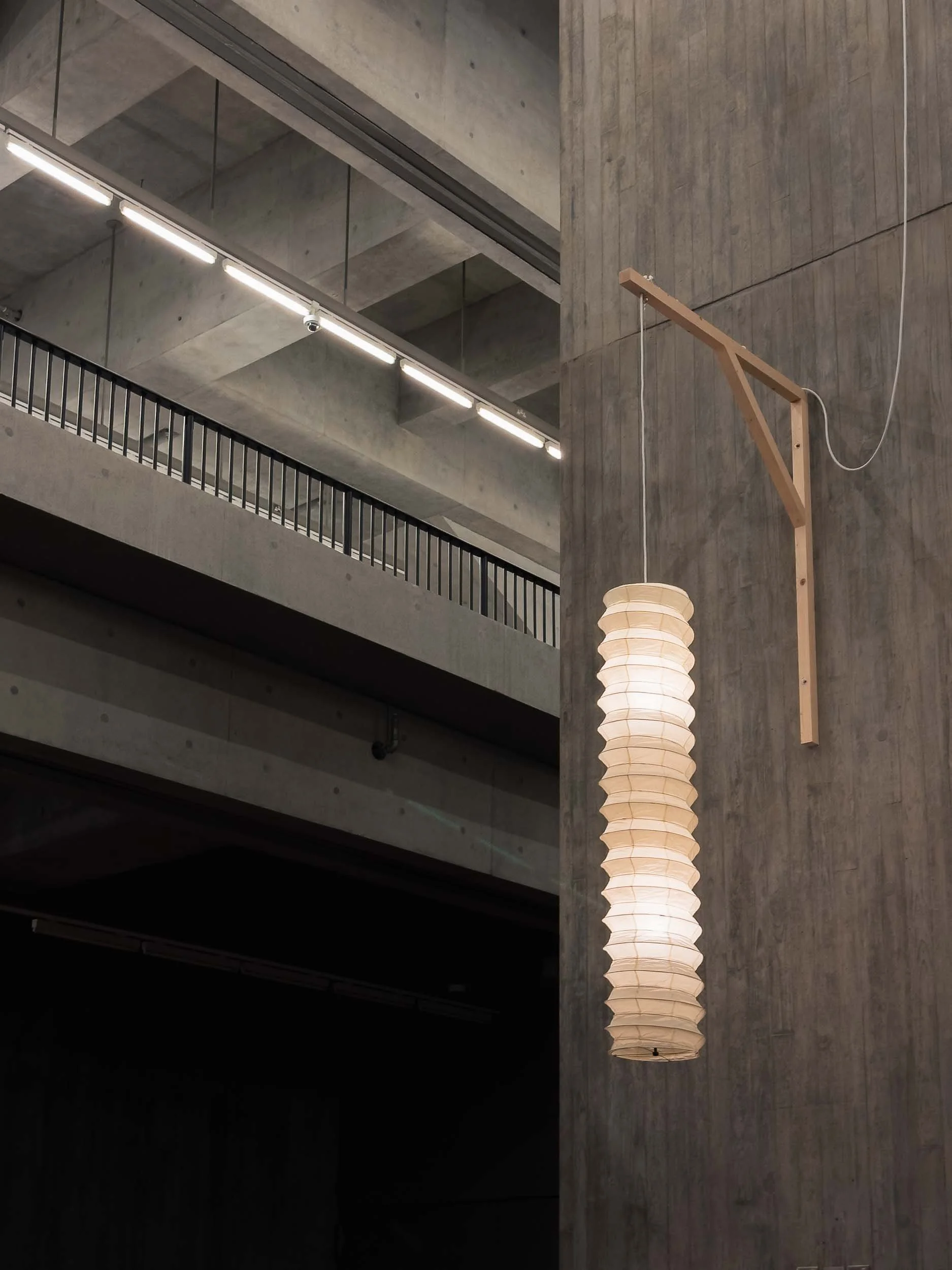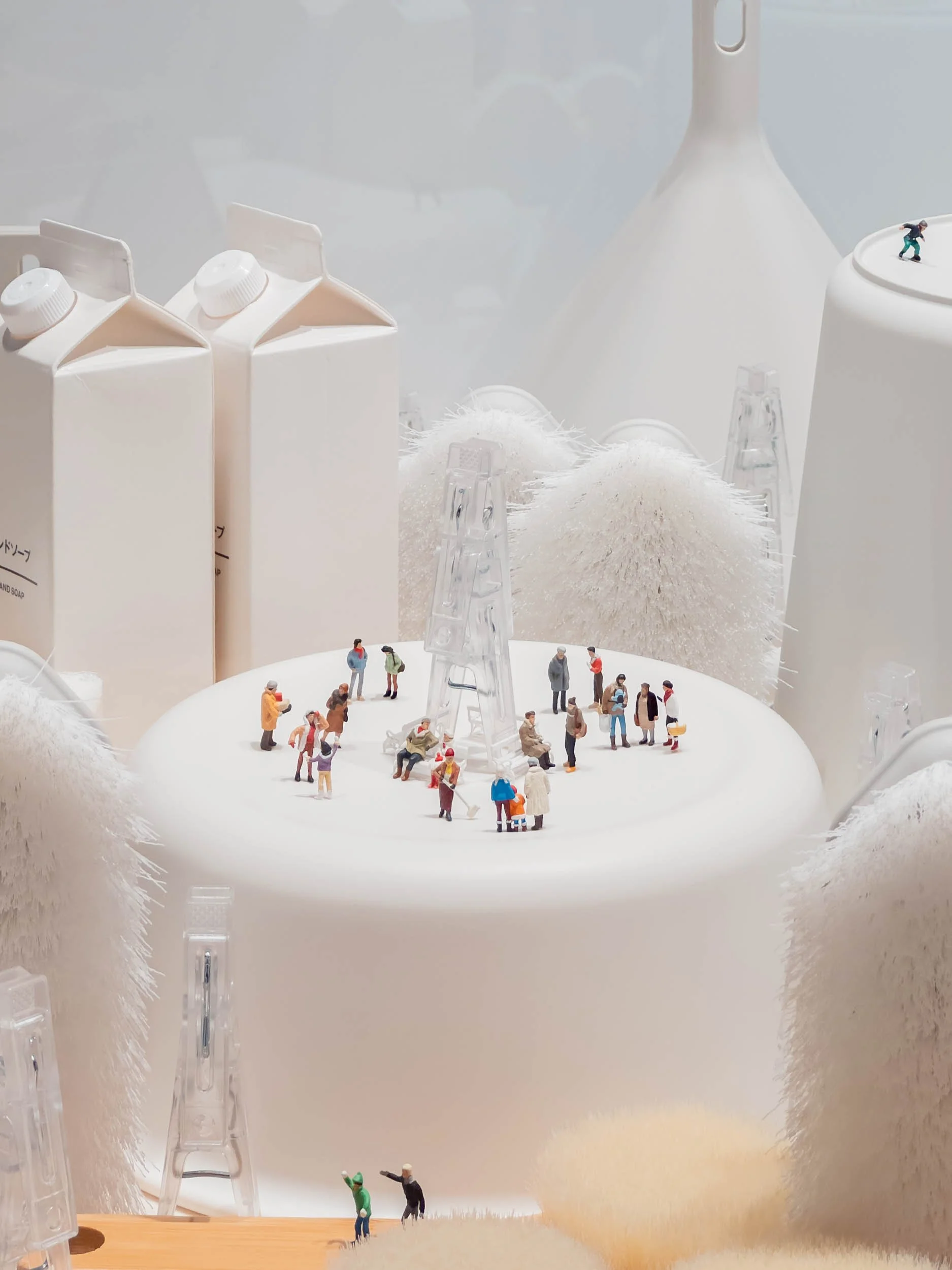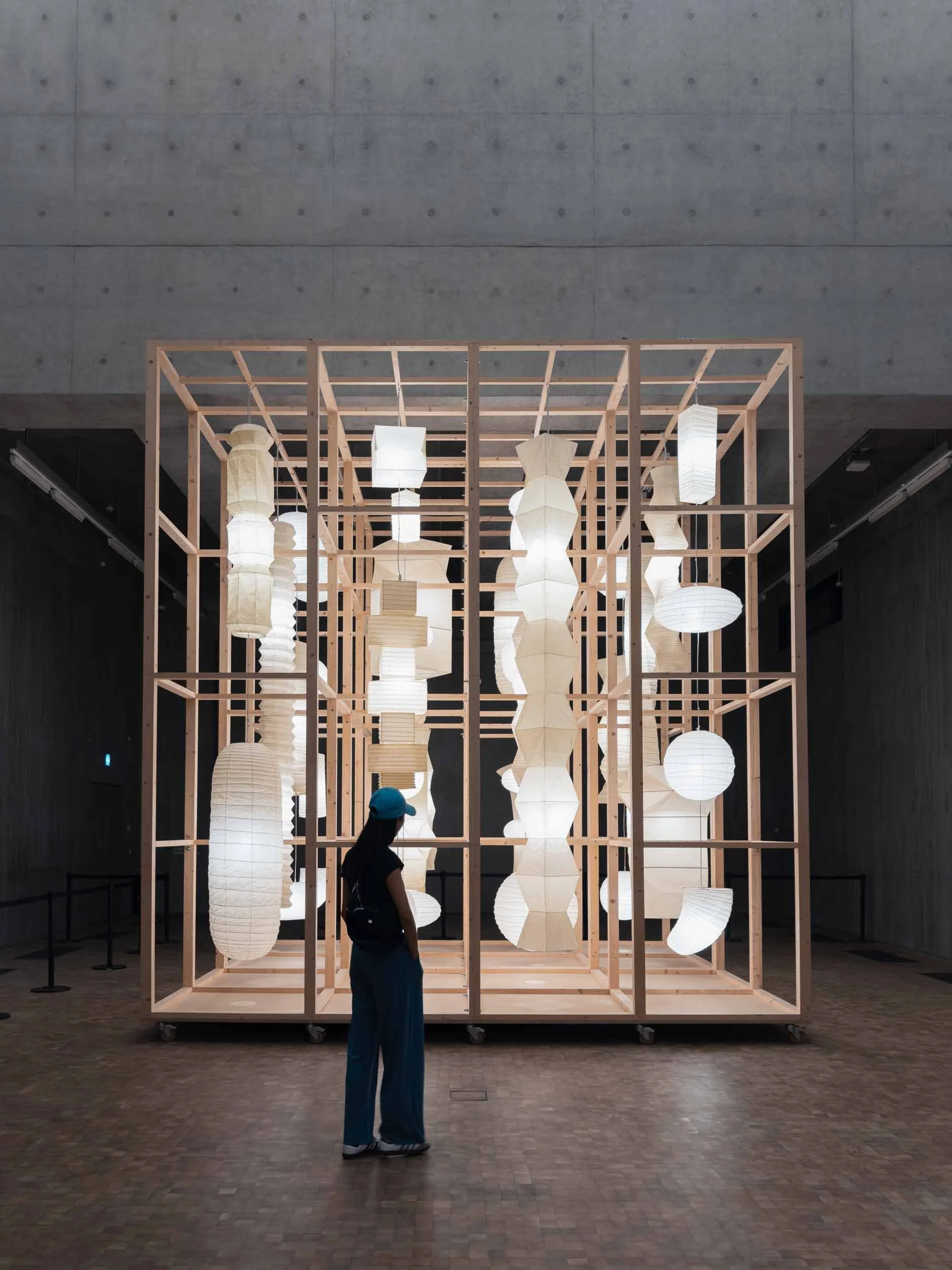Akari by Isamu Noguchi: Where Light Softens Concrete
Hong Kong may be a city that glimmers in unexpected ways, but nothing prepares you for the gentle, glowing hush of Akari by Isamu Noguchi.
I wandered into M+ on a humid summer afternoon looking to kill some time with a typical gallery stroll, and Akari in the museum’s cavernous Found Space was a free-of-charge, year-long exhibition. Usually, I have little expectations for such things (in Hong Kong, at least), but the exhibition did utterly transform the concrete space into a living poem of light and shadow.
Danh Vo In Situ: Art as Open Invitation
This new chapter for M+ is helmed by artist Danh Vo, whose long-term project In Situ transforms the Found Space’s raw concrete geometry into something unexpectedly intimate. Vo—Vietnamese-born and Danish by upbringing—has always been fascinated by the way personal histories and found objects intersect. Here, he’s reimagined the vast, industrial heart of the museum with a modular, organic structure that feels both architectural and welcoming. As you move through the wood lattice and leafy tropical plants, you catch moments of quiet dialogue between design, space, and memory. Vo’s vision is less about fixed displays and more about creating a social zone, a stage for performance, discussion, and, above all, connection.
Isamu Noguchi: A Sculptor Between Worlds
Isamu Noguchi’s name is almost synonymous with boundary-breaking creativity. The American artist of Japanese descent lived between cultures and disciplines, weaving together sculpture, furniture, gardens, and light. But it was a serendipitous stop in Gifu, Japan, in 1951—witnessing lantern-lit cormorant fishing on the Nagara River—that sparked the Akari revolution. The town’s mayor challenged Noguchi to revive the fading lantern tradition, and Noguchi responded with designs that, although immediately dubbed “deformed” by local newspapers, would soon reshape the global language of light.
Noguchi’s practice is rooted in the idea that objects can be more than what they seem—they can be bridges between people, places, and times. That spirit pulses through this exhibition, where Noguchi’s iconic Akari light sculptures are presented not as isolated artefacts, but as living presences in conversation with their environment. In his work, there is an undercurrent of borderless curiosity that resonates—the urge to see the beauty in every corner, to find comfort in the unfamiliar.
Akari Light Sculptures: Illuminating the Soul
26 October 2024 – 25 October 2025
“Akari”, meaning both “light” and “weightlessness” in Japanese, are more than lamps—they are Noguchi’s meditation on the fluid boundaries between art and life, a vision for a lighter, more luminous world. Inspired by Gifu’s traditional lanterns, each Akari is handcrafted from washi paper made from mulberry bark, glued over a bamboo frame and moulded into forms that range from cloud-like globes to geometric columns, all glowing softly within the wooden frames designed by Vo.
At the Gifu workshop Ozeki & Co., the process is as meditative as the result: the lamps are assembled, collapsed, and shipped flat—a nod to both practicality and Noguchi’s love of ephemeral beauty. When illuminated, the washi paper glows with a warmth that feels alive, transforming even the most minimalist room into a sanctuary. The Akari light sculptures are still produced in Gifu, and can be purchased directly from the Noguchi Museum Shop. Prices vary by model and size: smaller table lamps, such as the Akari 1A, start around $200-$300 USD, while larger floor or ceiling versions can reach $1,000 USD or more. Each piece is stamped with Noguchi’s signature sun-and-moon logo (明) in red, a symbol of their original artistry and enduring appeal.
Up close, the washi paper shimmers with subtle textures, and the gentle radiance feels almost alive. Circling the display, I was mesmerised by the variety of forms: some round and playful, others elongated and architectural, but all radiated warmth and tranquillity. The central installation’s modular wooden frame, which complemented the ribbing on the lanterns, felt like a curated lighting section of a furniture store. Everything was in harmony, yet of a distinct character.
Standing in the luminosity of Akari, there’s a kind of magic in how these sculptures dissolve the brutalist space into something softer, almost sacred: a sanctuary where light floats, memories drift, and time seems to slow. It’s incredible to think that a simple envelope made of paper and bamboo, conceived over seventy years ago, still has the power to enchant and connect. Which just proves that more often than not, art doesn’t have to shout to be unforgettable; it’s the quietest glow that lingers longest. So here’s a gentle invitation to pause, breathe, and let a little light in as we each brave the city’s restlessness.
Related Posts

